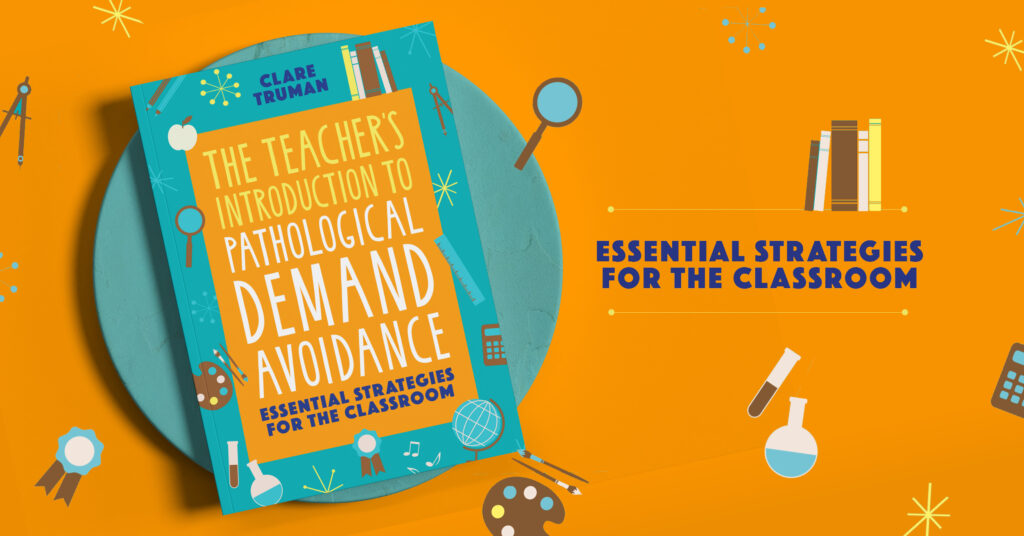The Teacher’s Introduction to Pathological Demand Avoidance
Here’s an exclusive extract from Teaching and Education Consultant, Clare Truman’s The Teacher’s Introduction to Pathological Demand Avoidance: Essential Strategies for the Classroom. Truman has a wealth of teaching experience both within mainstream schools and special schools, including an autism-specific school. In 2017, she established Spectrum Space Community Interest Company, a social enterprise and alternative education provision which specialised in supporting children with PDA whose anxiety made it difficult for them to attend school.
Having prioritized demands and decided which ones you are going to focus on, it is then important to present them in the right way. This is not just about what you say (although it is partly that), it is also about what you do, so this chapter will cover both. Sometimes people talk about disguising demands, and I suppose, in a way, the strategies that follow are ways of disguising demands, but it is also important to remember that the aim is not to trick the child into doing what we say (children and young people will catch on to that quite quickly and may not respect us for it).

Instead, our aim is to reduce the anxiety surrounding demands. A consequence of this is that the child or young person is more likely to be able to participate in what that they previously found too demanding; but the aim is not to ensure compliance, it is to reduce anxiety.
Phrases that offer choice are a good place to start:
‘Would you like to start with the writing or the drawing?’
Wondering out loud can be good too:
‘I wonder if anyone knows the answer to this question…’
It’s even better if the wondering invites someone to help you solve a problem:
‘I wonder how I am going to get all these shapes to fit together in a cube?’
In every interaction, the aim is to offer invitations and casual suggestions but to avoid clear and absolute instructions. It can be difficult to get into the habit of doing this. As teachers, we generally start at the level of clear instruction: ‘Right, Year 10, put down your pens and face this way.’
Then if that doesn’t work, we move to shorter, sharper instructions delivered in a firmer tone of voice: ‘I said, pens down, face this way.’ If that doesn’t work, we may use an even firmer tone of voice, perhaps at a louder volume, and we may introduce talk of consequences for not complying or issue ultimatums.
When teaching or supporting a child or young person with PDA this approach is unhelpful and often counterproductive. For our students with PDA, non-compliance is generally a sign of anxiety surrounding the demand. If we use increasingly firm or even fierce language and tone of voice, then we make that demand more and more immovable, thereby increasing the anxiety experienced by the student with PDA. The greater their anxiety, the lower their tolerance for demands and so as we work through the levels from clear instruction to firm ultimatum, we make it less and less likely that the instruction will be followed and in the process we make an already anxious child or young person even more anxious.
The key is to fight the urge to escalate things and instead focus on reducing anxiety by reducing demands. So, you want to start at the level of invitation or casual suggestion: ‘Are you ready to do literacy at the moment or are you busy with that drawing?’ Then if that doesn’t work you aim to de-escalate not escalate, so try talking to yourself: ‘I’m wondering what words to use to start a letter to the Queen.’ If that doesn’t work you could add some humour: ‘I might go with, “Hey, Queenie!”’
Each time, the aim is to bring the level of demand down a notch until the child or young person feels comfortable enough to engage. On very tricky days, you may need to start at the level of humorously thinking out loud in the first place and keep working at that level to ensure that demands remain at an absolute minimum.
You can find The Teacher’s Introduction to PDA or wherever you buy books. If you would like to read more articles like this and get the latest news and offers on our books about autism, why not join our mailing list? You may also be interested in our Facebook page or Twitter page.
